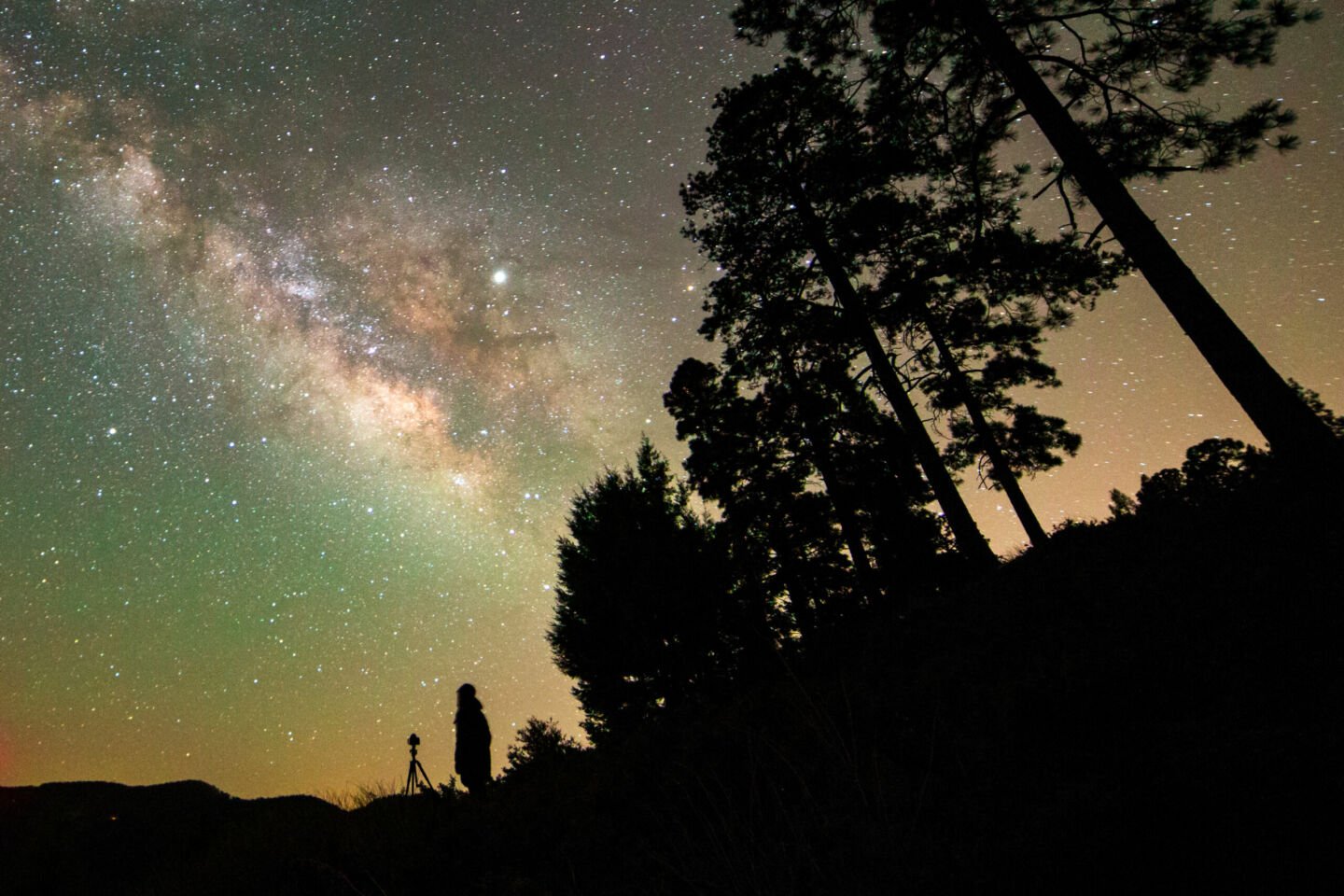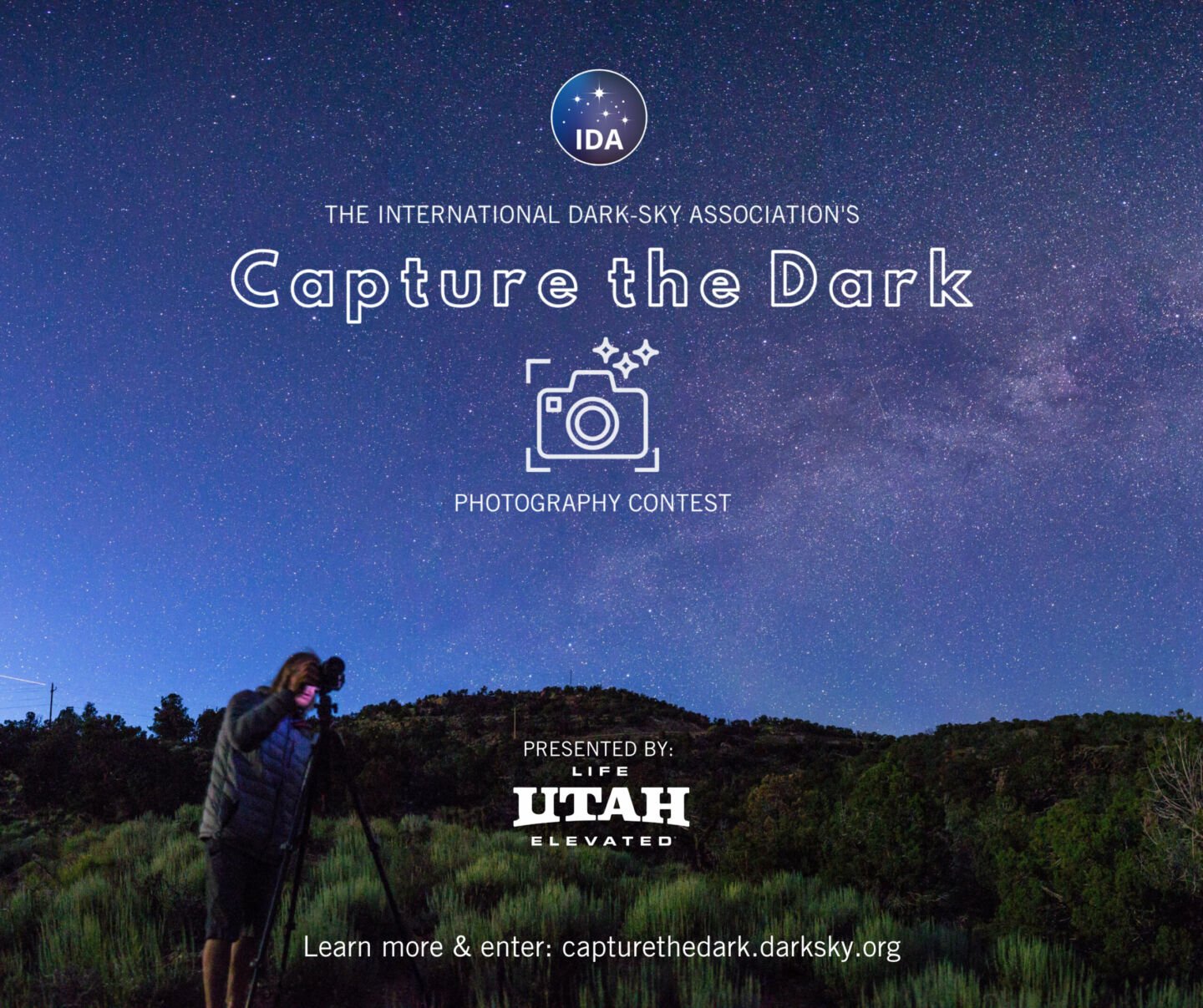
2023 Capture the Dark winners
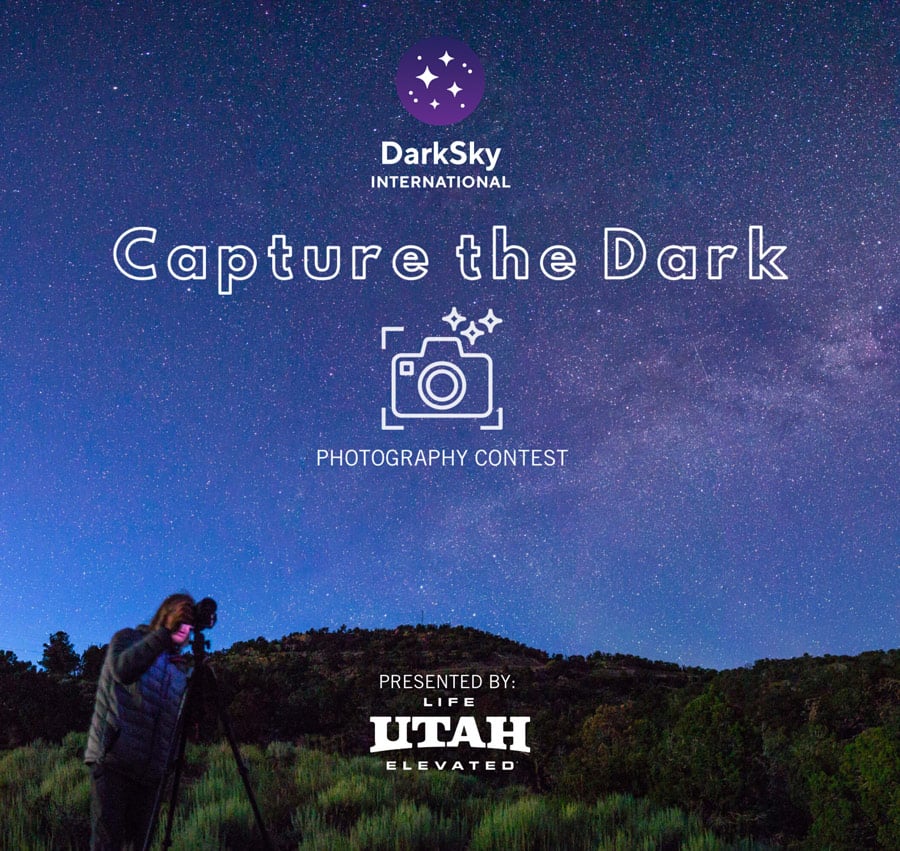
Photos can say a million words. In terms of light pollution, they can speak on how dark skies can change lives. It astounds us to think about how just one snapshot can power a movement for conservation efforts by showing how practical and awe-inspiring dark sky-friendly lighting can be. This year, to show off just how talented our dark sky communities, places, and individuals can be, we threw the third annual Capture the Dark Photography Contest, brought to you by Visit Utah.
This year, we received over 500 entries across ten different categories. Working together, our top-notch judges looked through all of your submissions, searching for photography skills, killer composition, category themes, and of course, that all-important ‘wow’ factor. And now? The results are in.
Each category has its champ who will receive a stellar prize package for their work. Included are a prime spot in DarkSky’s Nightscape publication, lots of love on the DarkSky blog and social media, a golden ticket to a DarkSky membership, and DarkSky and Visit Utah gear.
Check out the winners below!
Skip below to the categories:
Connecting to the Dark
International Dark Sky Place
The Impact of Light Pollution
The Bright Side of Lighting
Creatures of the Night
Deep Sky
The Mobile Photographer
Youth
Utah Dark Skies
People’s Choice
Category
Connecting to the Dark
Experiencing a natural night provides perspective, inspiration, and leads us to reflect on our humanity and place in the universe.
First Place
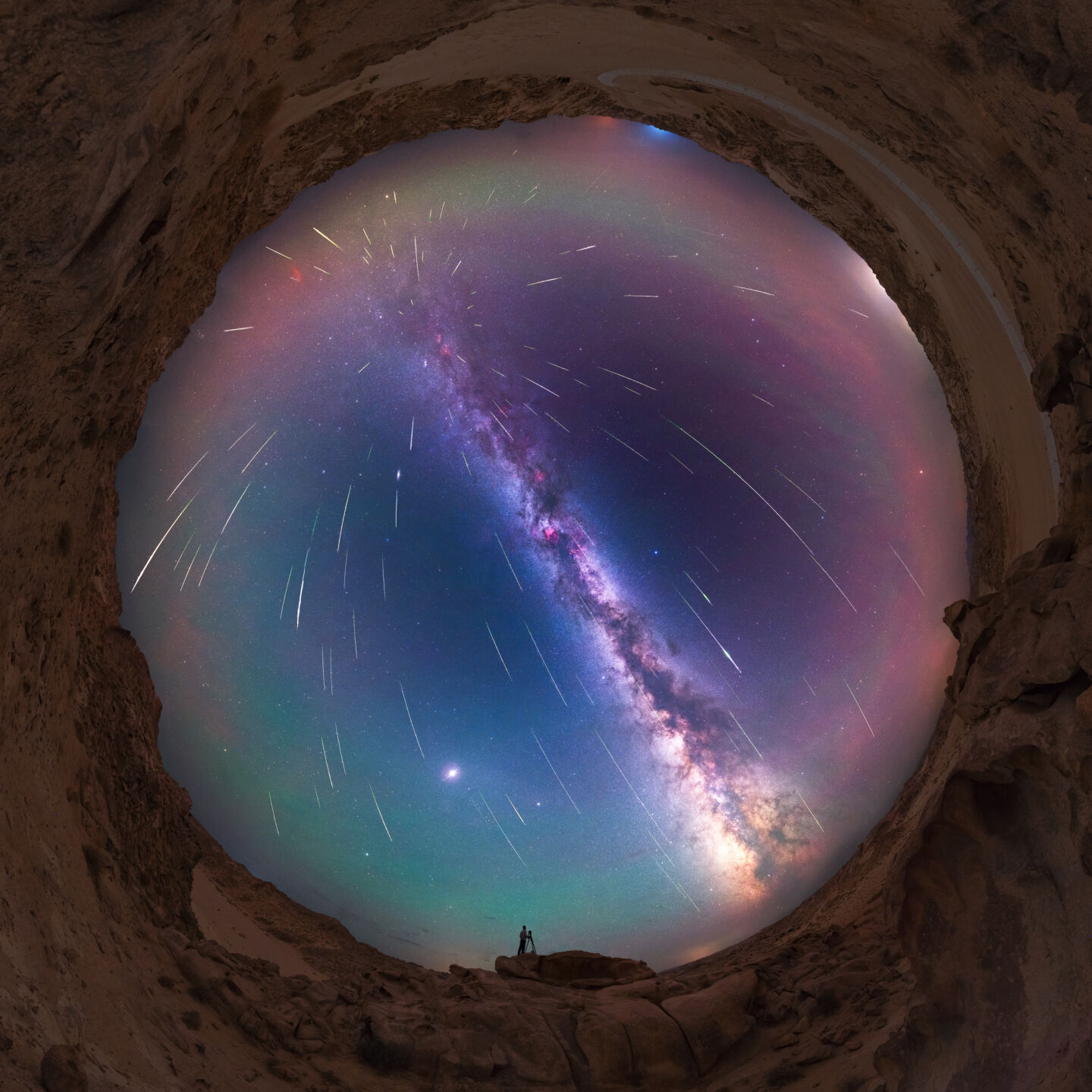
Title of photo: The sky is like a dome, covering field
Name of photographer: Wang Tianwei
Location of photo: Haisen chulu, Alashan Right Banner, Inner Mongolia
Description: Just before and after the maximum of Perseid meteor shower, look up to the Milky way on Sunday, and the meteor radiates from the position of Perseid to the whole sky. The fish eye projection effect is the best way to show all this.
Technical information: Single Exposure | Nikon D800 | Lens: sigma 14 1.8 art | Aperture: f/1.8 | ISO: 2000 | Shutter speed: 60s
Second Place
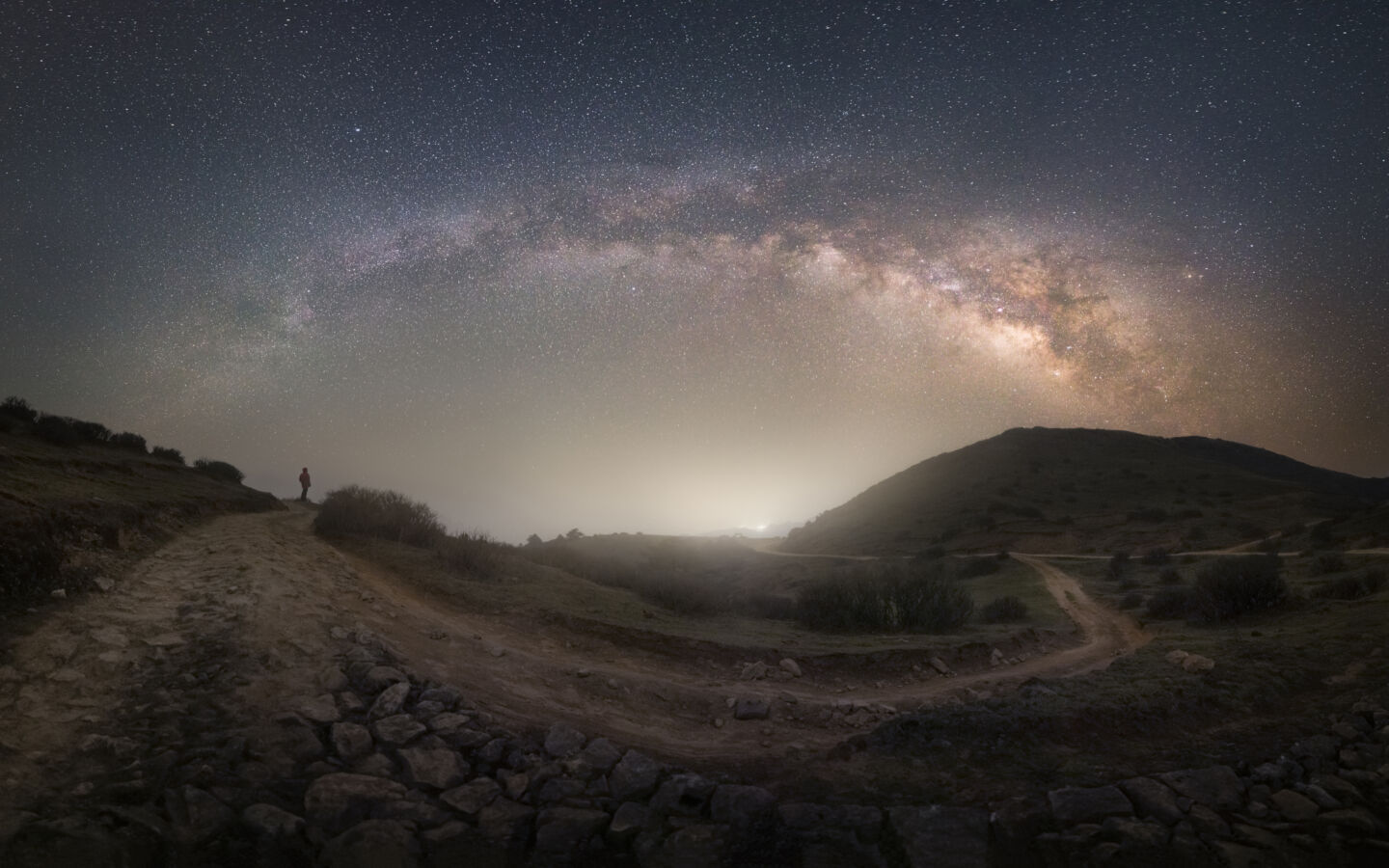
Title of photo: The Lookout
Name of photographer: Ranit Dholey
Location of photo: Sandakphu
Description: Night sky is a something that has always enticed my imagination, and this particular night in the high Himalayas of Nepal was a captivating experience. Cold and powerful gale force winds was rumbling through this tiny hilltop of Chandu in Sandakhpu, but the pristine clear skies post 1 AM in the night was made it irressitable to try and make an image. The curve of the road made a somewhat mirror like effect with the arch of the milky way, and that was how I composed my image.
Technical information: Stacked | Sony a7 Mark IV | Lens: Sigma 14-24 DG DN Art| Aperture:f2.8 | ISO: 6400 | Shutter speed: 20s
Third Place

Title of photo: Sea Pianist
Name of Photographer: Zhaohai Zhang
Location of photo: Shuanglang Town, Dali City, Yunnan Province
Description: On a night so quiet that the tracks of the stars could be reflected in the water, a pianist sat down at the piano and enjoyed his performance all to himself. But he is not alone, looking up, between the green earh, the stars, as if you can feel the rhythm of the stars. When strings of notes sway and fall into the waves, it is a wonderful ensemble of black and white keys joining hands with the stars.
Technical information: Blend | Sony ILCE-7M3 | Lens: 16-35 2.8GM | Aperture: 2.8 | ISO: 250 | Shutter speed: 20s
Category
International Dark Sky Place
Nearly 200 protected lands and municipalities around the world have been certified by DarkSky as an International Dark Sky Place, creating havens for astrophotographers.
First Place

Title of photo: Lily’s Whisper
Name of photographer: Ethan Su
Location of photo: Hehuan Mountain Dark Sky Park, Nantou
Description: The fragrance of Lily attracts night moth dancing in the air, the mist cover Milky Way one after another, the gentle breeze carry fresh floral compose this pleasant summer night. Didn’t expect that Lily blossoms above 3000m altitude in summer, while I was scouting for new shooting spot in Hehuan Mountain Dark Sky Park.
Technical information: Blend| Sony A7R4 | Aperture: Foreground: f8, Sky: f2.8 | ISO: Foreground: ISO1250, Sky: ISO800 | Shutter Speed: Foreground: 1/30, Sky: 240sec*3shots & stack for noise reduction
Second Place

Title of photo: Aurora and Milky Way along the California Trail
Name of photographer: Noel Benadom
Location of photo: City of Rocks National Reserve, Almo, Idaho
Description: City of Rocks National Reserve is one of Idaho’s newest Dark Sky Reserves. This historic park is part of the California Trail, which was an emigrant trail in use from the 1840s–1880s. The large rock on the right is Camp Rock, where many carved their names.
Technical information: Single Exposure | Canon 6D astromodded for Ha | Lens: Sigma 14mm f/1.8 Art | Aperture: f/2.8 | ISO: 2500 | Shutter speed: 30s
Third Place

Title of photo: Cosmic candles
Name of photographer: Josh Taarud
Location of photo: Anza-Borrego Desert State Park, Borrego Springs, California
Description: This was taken at Anza-Borrego Desert State park, the region has been a dark sky site since 2009. The light dome in the center of the horizon beneath all of the green, uniform airglow is the Salton Sea. It and other local towns like Palm springs and Ramona are the only things encroaching on the horizon of these amazingly dark skies, and given its proximity to San Diego, I am quite happy it receives protection. This image is a blue hour blend, both the sky and foreground are panoramas, where the sky was tracked for each panel.
Technical information: Blend | Canon 6d (Astro-modded, 390nm-700nm) | Lens: Tamron 15-30mm 2.8 @ 30mm | Aperture: 2.8 | ISO: 400 | Shutter speed: 4 minute tracked
Category
The Impact of Light Pollution
Light pollution can have significant impacts on the environment, human health, and our access to the night sky.
First Place

Title of photo: “Dark” skies in the mountains?
Name of photographer: Constantine Themelis
Location of photo: Tre Cime di Lavaredo, Province of Belluno, Province of South Tyrol
Description: After a long day of enjoying and photographing the Italian Alps, I decided to capture a wide panorama to show you how beautiful Tre Cime is. The combination of the wild airglow, the coming clouds and the light from Rifugio Locatelli made the whole scene really special. However, it really hit me that even up in the mountains, I could not find pure dark skies. Tourism is expanding at a wild and unstoppable rate. You can clearly see the yellow glow of the “nearby” hotels expanding for hundreds of kilometers. So, what’s next? The final result is a 10-image panorama.
Technical information: Panorama | Camera: Canon EOS Ra | Lens: Sigma 28mm f1.4 | Aperture: f1.4 | ISO: 1600 | Shutter speed: 10sec
Second Place
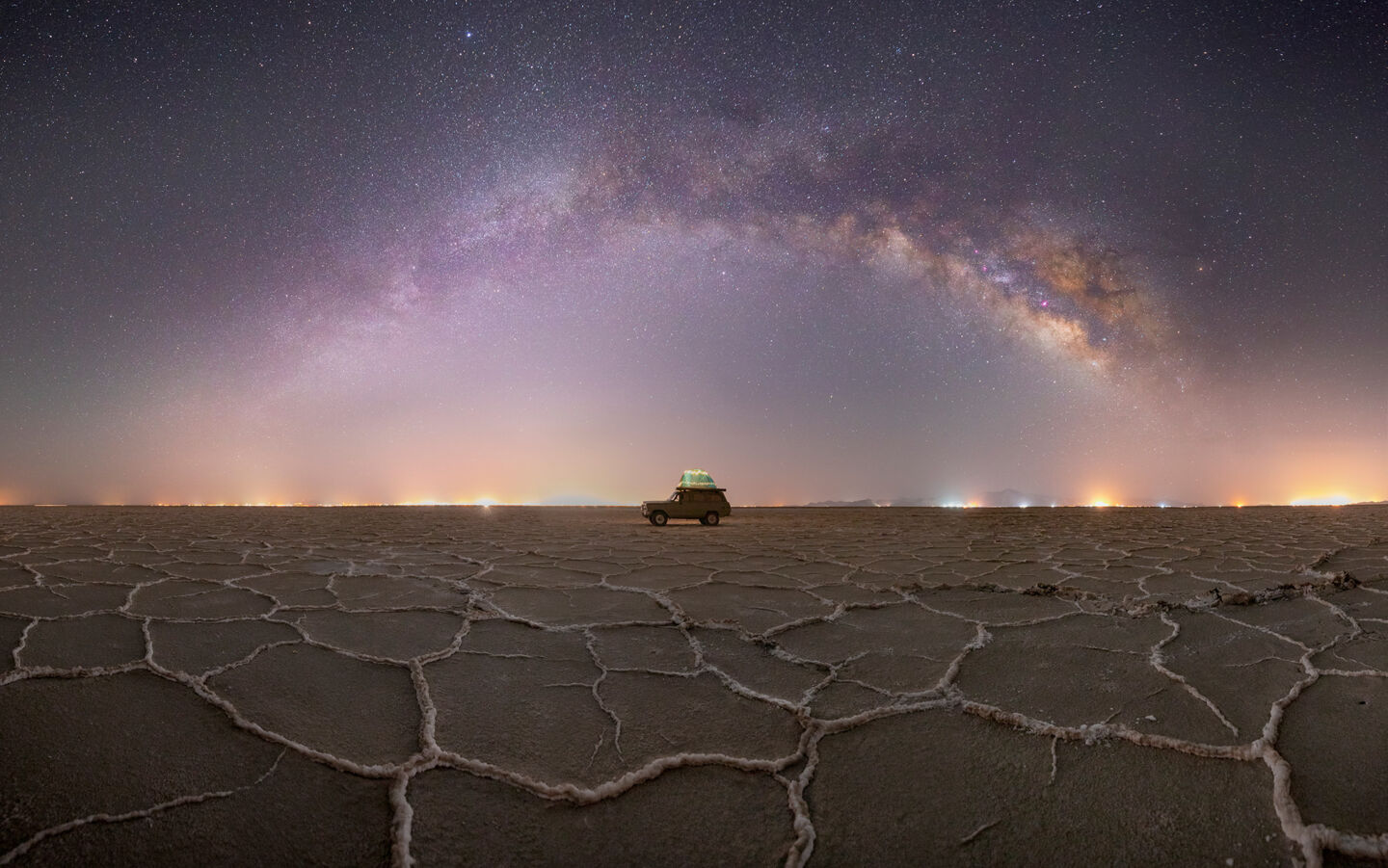
Title of photo: A multi-million star hotel
Name of photographer: Morteza Salehi
Location of photo: Salt Lake Sirjan
Description: Due to the presence of severe light pollution, I will present the recorded image of this photo in the impact of light pollution section.
Technical information: Single Exposure | Camera: 5D IV | Lens: Tamaron 15-30 | Aperture: 2.8 | ISO: 4000 | Shutter speed: 25sec
Third Place
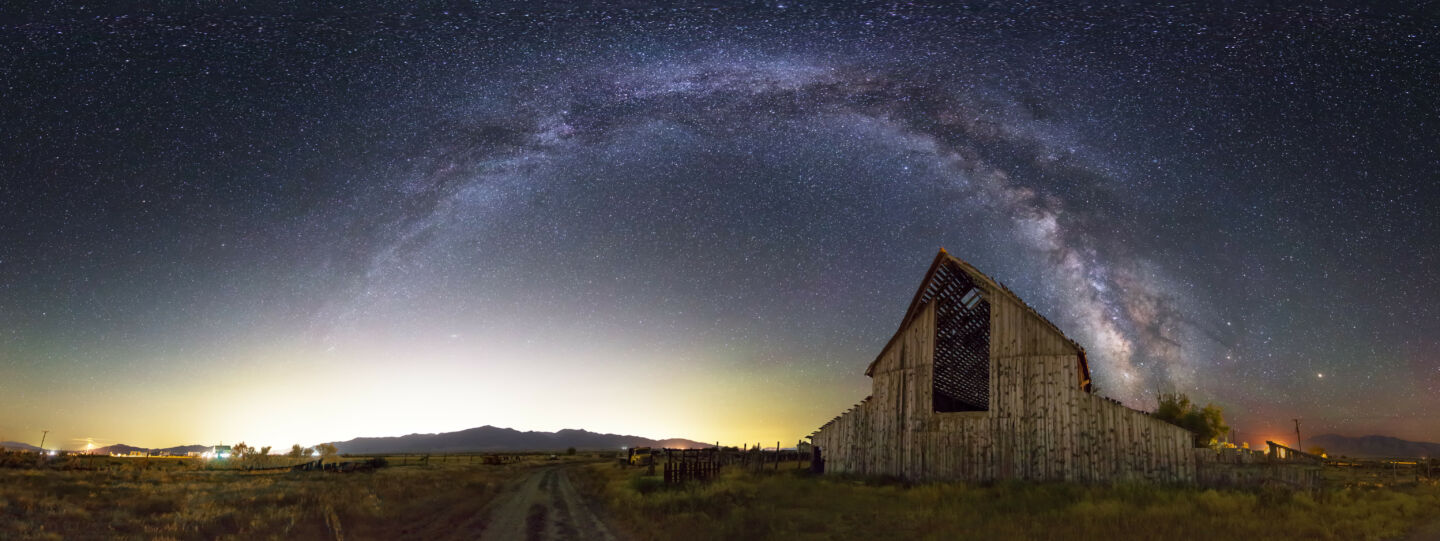
Title of photo: Light Pollution in Rush Valley from Salt Lake City light dome
Name of photographer: Royce Bair
Location of photo: Rush Valley, Utah
Description: The little rural community of Rush Valley, 35 miles west of Salt Lake City still suffers from the light pollution of SLC’s light dome. (This is a panorama of 5 single exposures.)
Technical information: Single exposure | Camera: Canon 5D Mark III | Lens: 15mm | Aperture: f/2.8 | ISO: 8000 | Shutter speed: 20sec
Category
The Bright Side of Lighting
Light pollution can give artificial lighting a bad reputation, but lighting that follows DarkSky’s Principles for Responsible Outdoor Light can be beautiful, healthy, and functional.
First Place
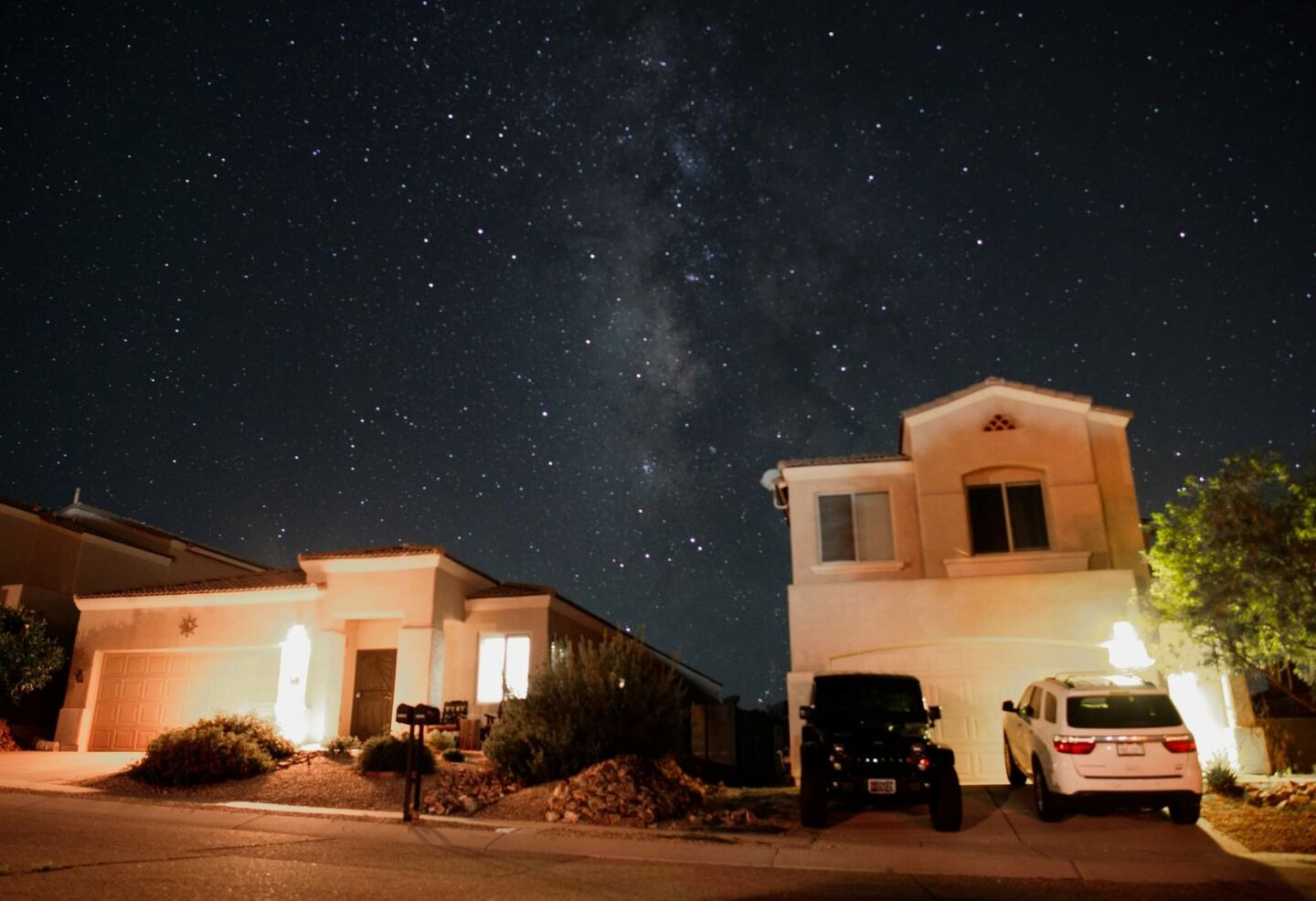
Title of photo: My neighborhood
Name of photographer: Celeste Boudreaux
Location of photo: Corona de tucson, Arizona
Description: My neighborhood adhering to dark sky measures. You will notice our outdoor lights have covers on them . My house isn’t in this image but I even use red lights under my covers. These measures allow us to see the milky way with the naked eye even though we are a suburb of tucson.
Technical information: Single exposure | Canon5d | Lens: Rokinon 24mm | Aperture: 2.8 | ISO: 1600 | Shutter speed: 25s
Second Place
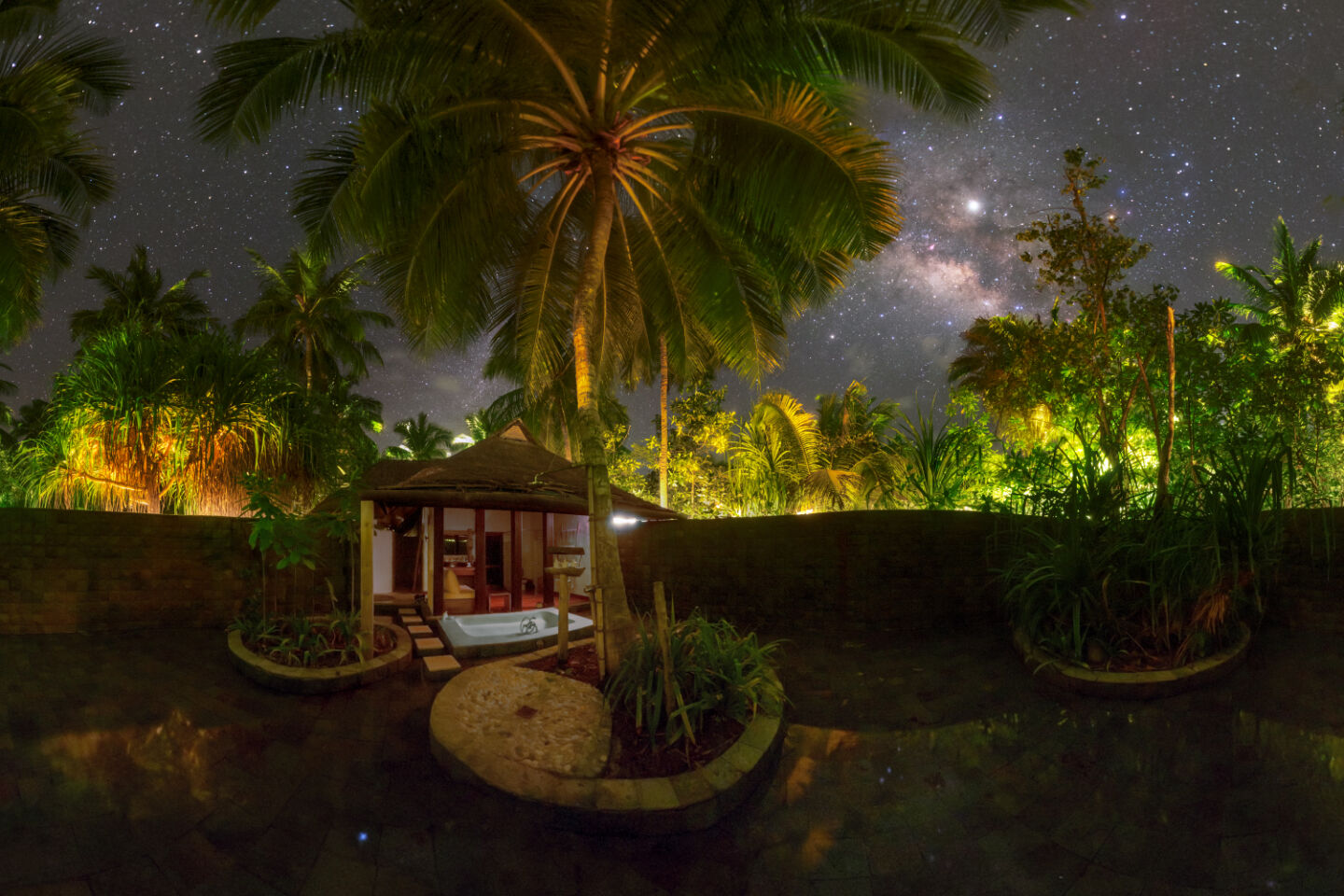
Title of photo: Bathroom under the Sky
Name of photographer: Petr Horálek
Location of photo: Soneva Fushi
Description: Soneva Fushi Island, Maldives, is locally well-known for its friendly approach to the environment including decent lighting to preserve the night nature’s life undisturbed. As a result, each of the villas has its own outside bathroom space decently illuminated and you can enjoy both the bath and night sky above.
Technical information: Blend | Canon 6D modified | Lens: Saymang 12 mm | Aperture: 2.8 | ISO: 10000 | Shutter speed: 30s
Third Place
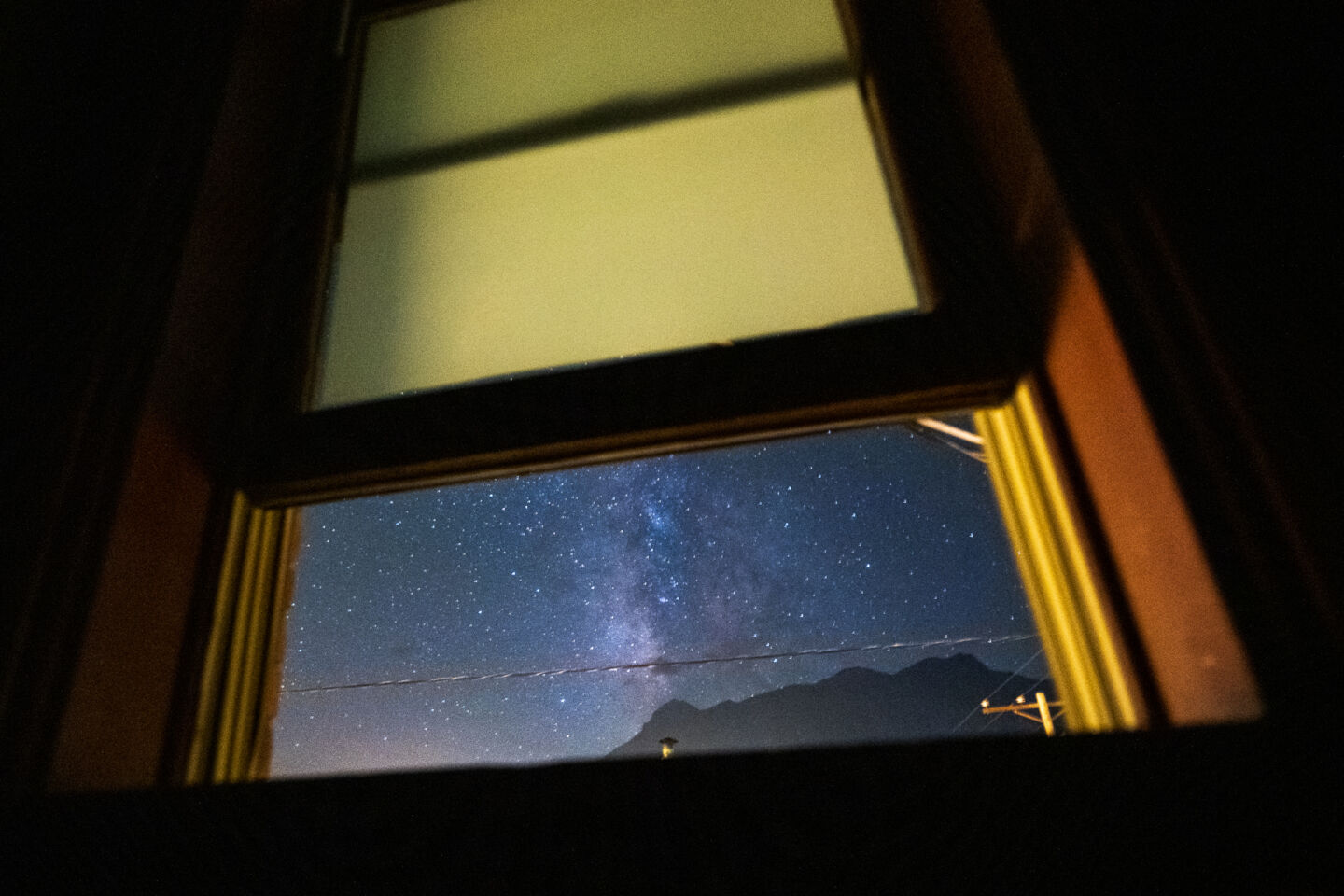
Title of photo: Small Town Starry Nights
Name of photographer: Joe Casias
Location of photo: Silverton, Colorado
Description: In Silverton Colorado, there lies a very small mountain town that has worked to improve their effect on the polluting the night skies with light pollution. Even though there is still work to be done, it was amazing to witness that you can actually see the Milkyway outside of your hotel room window! Let’s share these amazing views so other cities and towns can strive to achieve lower light pollution levels just as Silverton Colorado has done.
Technical information: Single Exposure | Nikon z7 | Lens: NIKKOR Z 14-24mm f2.8 | Aperture: F2.8 | ISO: 12800 | Shutter speed: 6s
Category
Creatures of the Night
Light pollution doesn’t only erase our view of the stars, scientific evidence suggests that artificial light at night has negative and deadly effects on wildlife, including amphibians, birds, insects, and mammals.
First Place
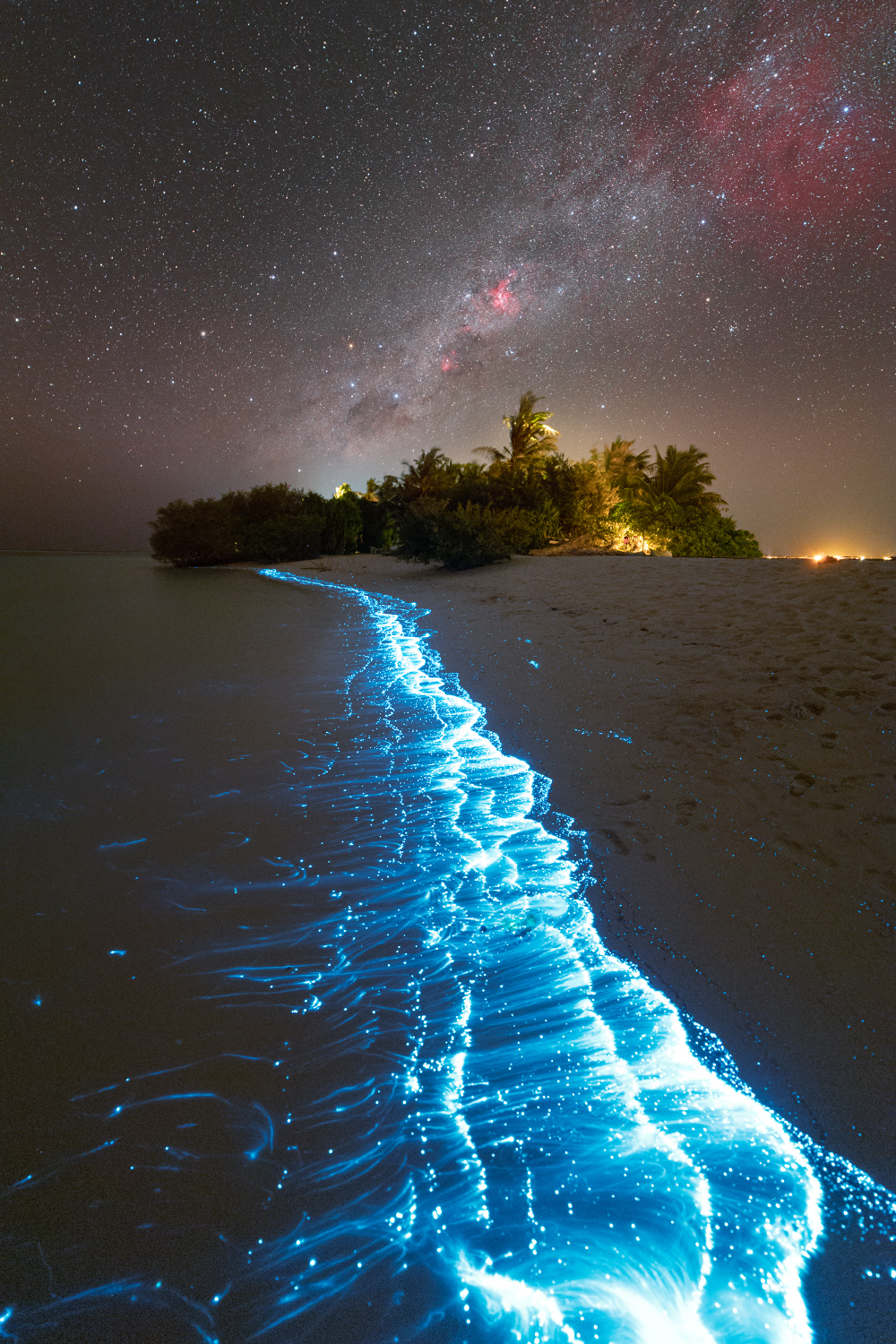
Title of photo: Milky Way above the Turquoise Wonderland
Name of photographer: Petr Horálek
Location of photo: Soneva Jani
Description: The bioluminescent plankton belongs to the night nature all around the world as part of the natural ecosystem. If not disturbed by artificial light, it helps to preserve the rich ecosystem as protection but also as food. Plus, with no light pollution, you can enjoy such wonderful natural light in the night.
Technical information: Single exposure | Canon Ra | Lens: Samyang 24mm | Aperture: 2.2 | ISO: 5000 | Shutter speed: 15s
Second Place

Title of photo: Symphony of the Cosmos
Name of photographer: Tengyu Cai
Location of photo: Wicklow Beach, Ontario
Description: While gazing at the starry sky, I witnessed a cosmic ballet. Trails of stars painted the night, while fireflies illuminated the scene like enchanting fairies. This photo captures the beauty of nature’s treasures, reminding us of the awe and wonder in simple moments. Immerse yourself in the magnificence of our universe.
Technical information: Stacked | Canon R5 | Lens: Rokinon 14mm | Aperture: 2.8 | ISO: 6400 | Shutter speed: 15s x 417
Third Place
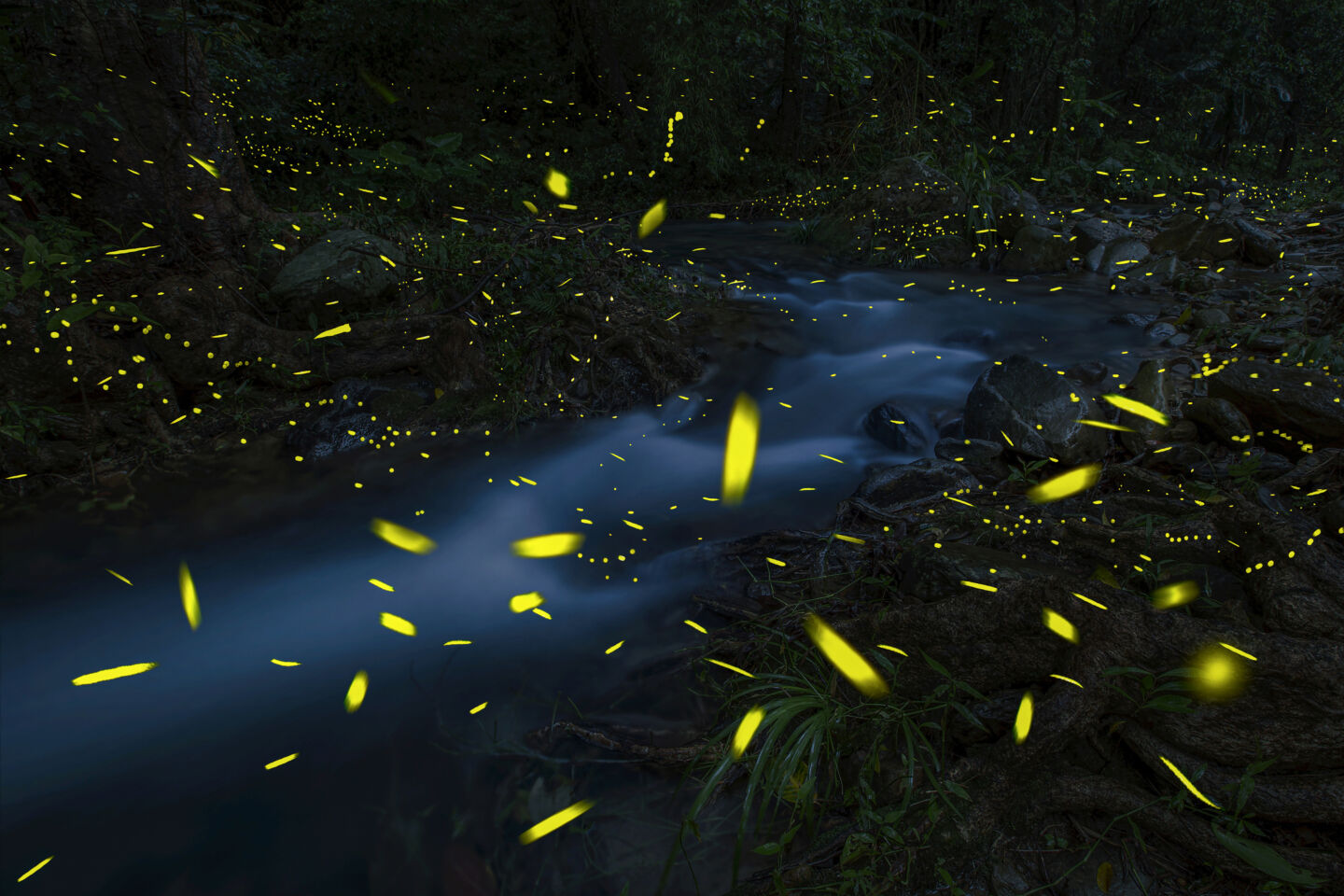
Title of photo: glowworm
Name of photographer: Haikun Liang
Location of photo: Shenzhen City
Description: The work was filmed in Zhaoqing. With the government’s emphasis on the environment, the local wildlife has been well reproduced.
Technical information: Stacked | Canon 1DXII | Lens: EF 35 | Aperture: 13F | ISO: 200 | Shutter speed: 30s
Category
Deep Sky
For thousands of years, humans have looked to the night sky and wondered what is out there. Today, we can take photos of deep space objects from our own backyards.
First Place
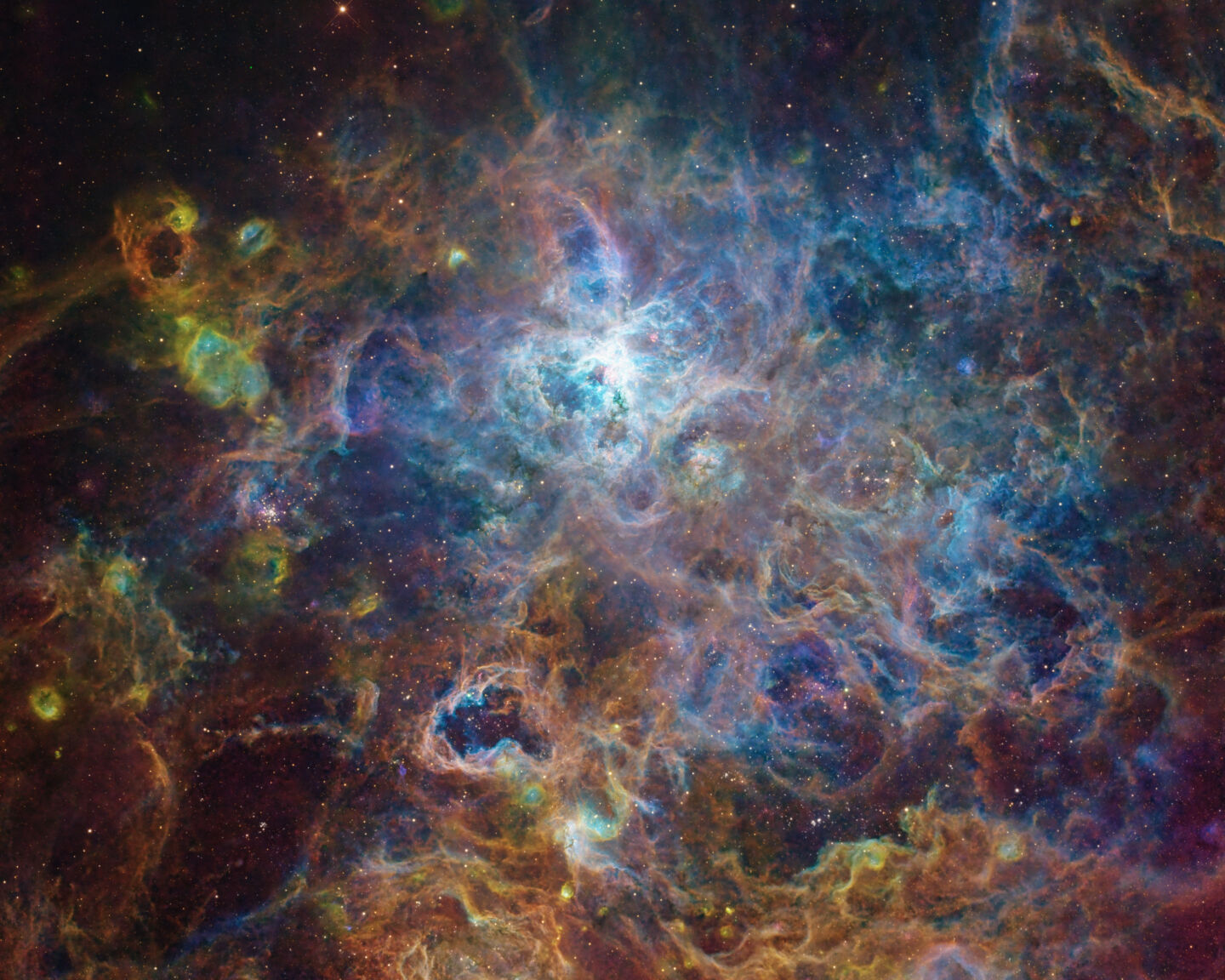
Title of photo: The Celestial Spider Web
Name of photographer: Zubuyer Kaolin
Location of photo: El Sauce, León
Description: The Tarantula Nebula is a bright starburst region in the Large Magellanic Cloud. It is visible from the southern hemisphere only so to capture it, I acquired some observation time from a remote observatory in Chile. Because of the pristine Bortle 1 sky in that region, I was able to capture this intricate image in Hubble Palette showcasing ionized Hydrogen, Sulfur and Oxygen gas. The resulting image fills me with a childlike sense of awe and wonder.
Technical information: Subframe | Aperture: f/3.8 | Shutter Speed: 300 seconds per subframe
Second Place

Title of photo: Messier 78 behind Barnard’s Loop in Orion
Name of photographer: Rolf Olsen
Location of photo: Auckland
Description: This image is a deep two-panel mosaic of one of the most colourful areas in the sky, showing the spectacular reflection nebula Messier 78 in Orion. I feel that this image conveys the beauty and mystery of the night sky. When viewing this complex and colourful display of stars and nebulae, gently veiled behind red Hydrogen emission, one naturally ponders what is out there? For this image I added nearly 17 hours of H-Alpha to capture the faint outer filaments of Barnard’s Loop which covers the entire field of view.
Technical information: Aperture: 12.5 inches | Shutter Speed: 5 minutes | Lens: Homebuilt 12.5 inch f/4 Newtonian | Camera Body: QSI 683wsg with Lodestar guider
Third Place
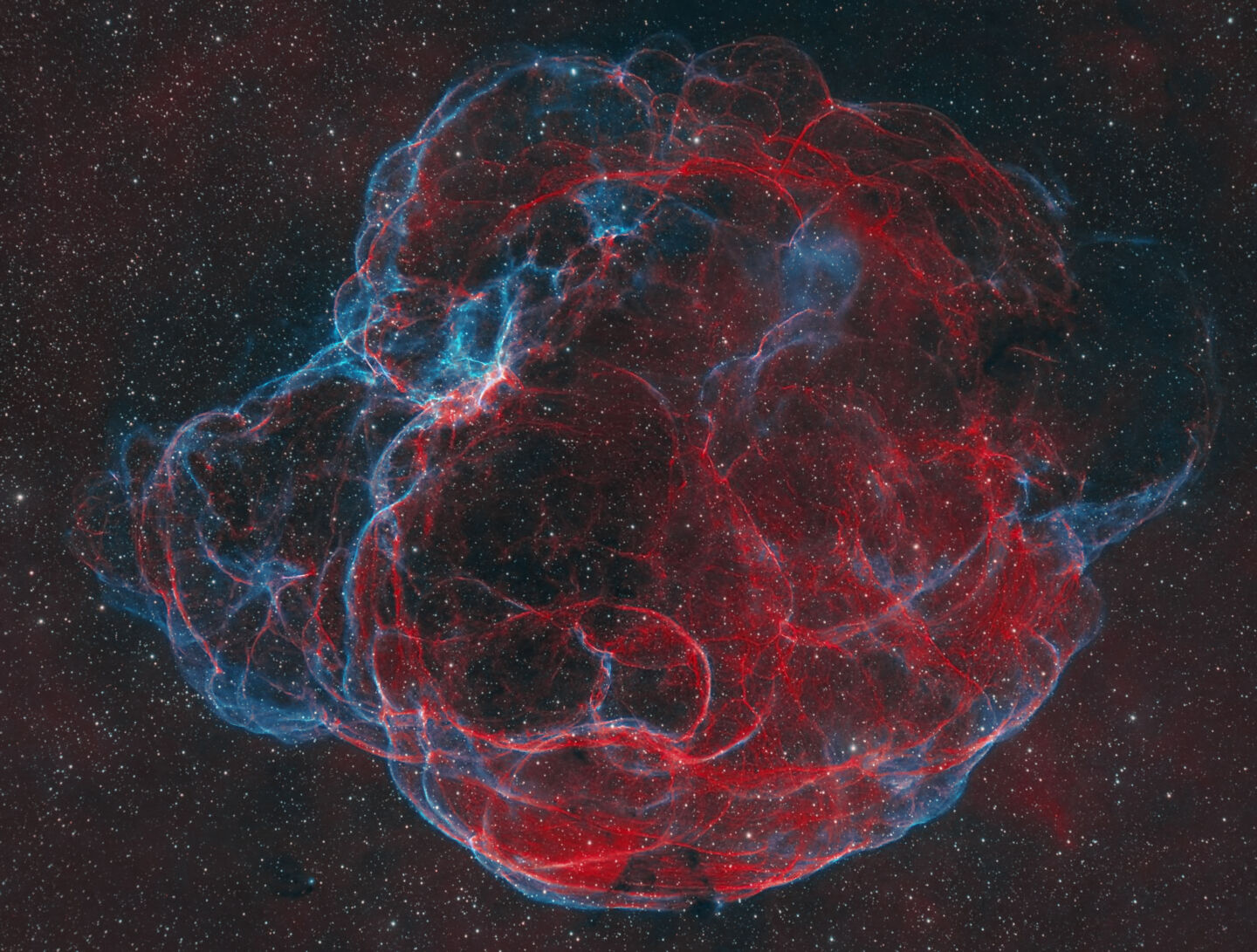
Title of photo: The Spaghetti Nebula, supernova remnant in Taurus
Name of photographer: Wutichai Krodkiri
Location of photo: Sakaeo Province
Description: The Spaghetti Nebula (designated Simeis 147 and Sh2-240) is an extremely faint, fairly large supernova remnant of about of 150 light years across, located some 3,000 light years away in the constellation of Taurus. The violent stellar explosion that created the Spaghetti Nebula left behind all that remains of the original star’s core: a spinning neutron star known as pulsar PSR J0538+2817, surrounded by intricate filaments of material.This expanding remnant has an expansion rate of about 950 kilometers (nearly 600 miles) per second, and is approximately 40,000 years old.
Technical information: Aperture: F7 | Shutter Speed: 600 | Lens: Askar 107Phq 0.7reducer focal lenght 524mm | Camera Body: Asi 2600 mm pro
Category
The Mobile Photographer
No big camera? No problem! A shot from any of the above categories taken with a cell phone, tablet, or GoPro. No DSLR, mirrorless camera, or drone shots.
First Place

Title of photo: Dragon in the Magic Tree
Name of photographer: Chen Bin
Location of photo: Lijiang, Yunnan
Description: I never thought that my mobile phone could take such a picture of the starry sky with a single sheet. I found such an angle of Jade Dragon Snow Mountain at night. In winter, M31 and Cassiopeia slowly fell to the top of Jade Dragon Snow Mountain in the northwest, and I took this picture through a strange dead tree.
Technical information: Single exposure | Mobile device: vivo X90 Pro+ | Aperture: f1.8 | ISO: 4000 | Shutter Speed: 32 seconds
Second Place

Title of photo: Beaming Lights
Name of photographer: Kate Garner
Location of photo: Mount John Observatory, Tekapo
Description: This image of the aurora Australias was taken on my iPhone 13 mini, from the University of Canterbury’s Mount John Observatory. I had a small gap between guiding stargazing tour groups around the observatory, just as the display exploded into an array of beams and dancing ribbons. There was no time to set up a camera — but my phone still captured the colours of the aurora, and the dome of the Optical Craftsman telescope open and observing the night sky.
Technical information: Single exposure | iPhone 13 Mini
Third Place
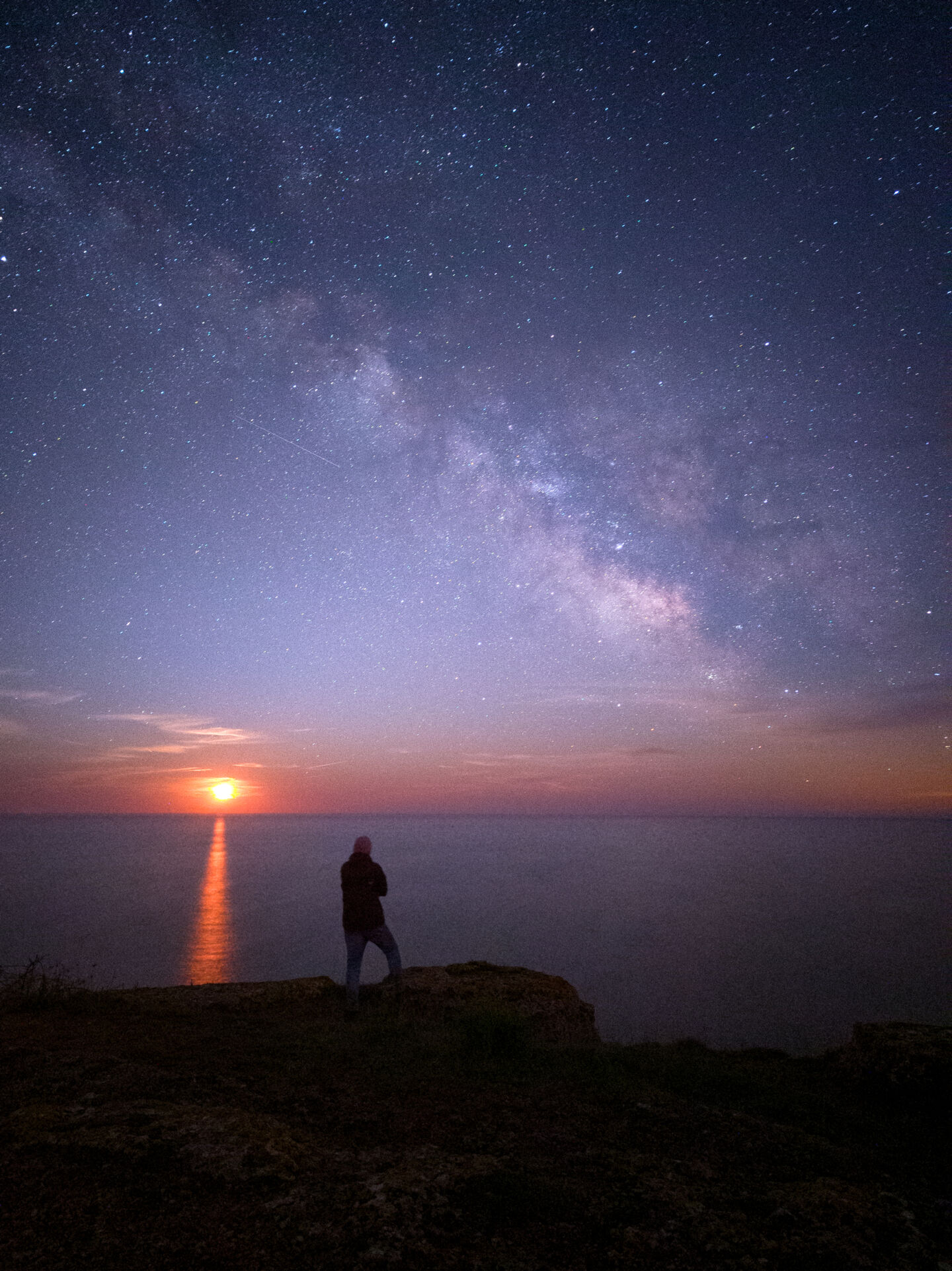
Title of photo: Enjoying the Moon rise under the Milky Way core
Name of Photographer: Mihail Minkov
Location of photo: Black Sea Coast
Description: One of the best combinations in astrophotphotography for me is capturing the Moon rise and Milky Way core in one shot. I challenged myself to capture this surrealistic scene with my Xiaomi 13 Pro phone and this is the result, a single exposure, 30 seconds of light 🙂
Technical information: Single exposure | Mobile Device: Xiaomi 13 PRO | Aperture: 1.9 | ISO: 3200 | Shutter Speed: 30 sec
Category
Youth
A shot for any of the above categories taken by someone 17 years old or younger.
First Place
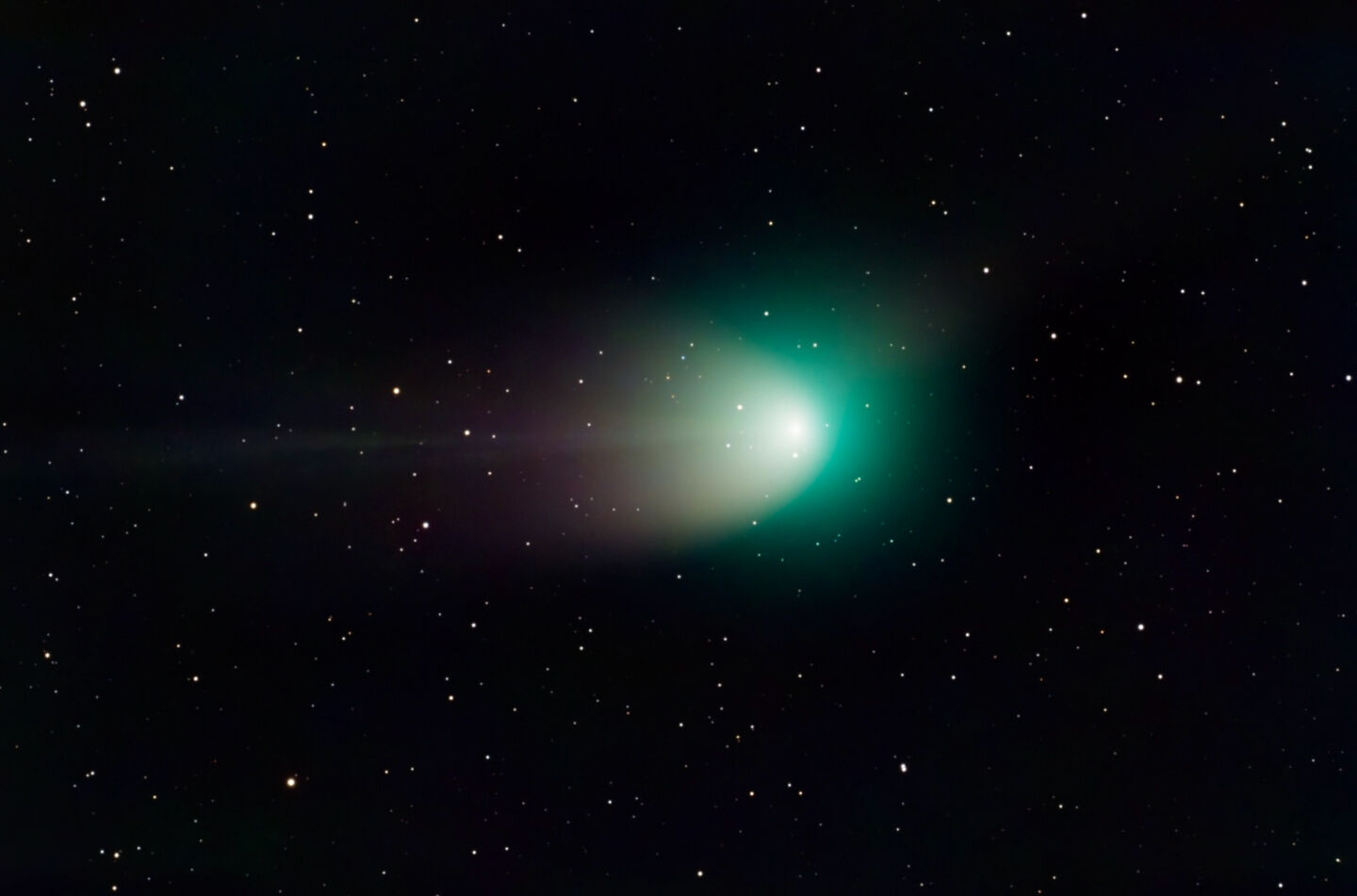
Title of photo: The Green Comet
Name of photographer: Carl Crum
Location of photo: San Carlos, California
Description: As transitory as a comet, childhood flies by at an astonishing speed. Indeed, when I consider my growth as an astrophotographer, I find it difficult to believe that several years ago I had never even considered attaching my camera to a telescope and documenting celestial phenomena. Fortunately, comets, such as this photo of C/2022 E3 (ZTF), glow brightest when they approach the sun, a metaphor for how I intend to approach the blazing tribulations of adulthood. However, for the remainder of my youth, I will enjoy my ride around the sun and gaze fondly upon the cosmos.
Technical information: Stacked | Lens: Takahashi FSQ-106 | Aperture: F5 | ISO: Gain 20 | Shutter speed: 85 x 60s (1 hour 25 minutes)
Second Place
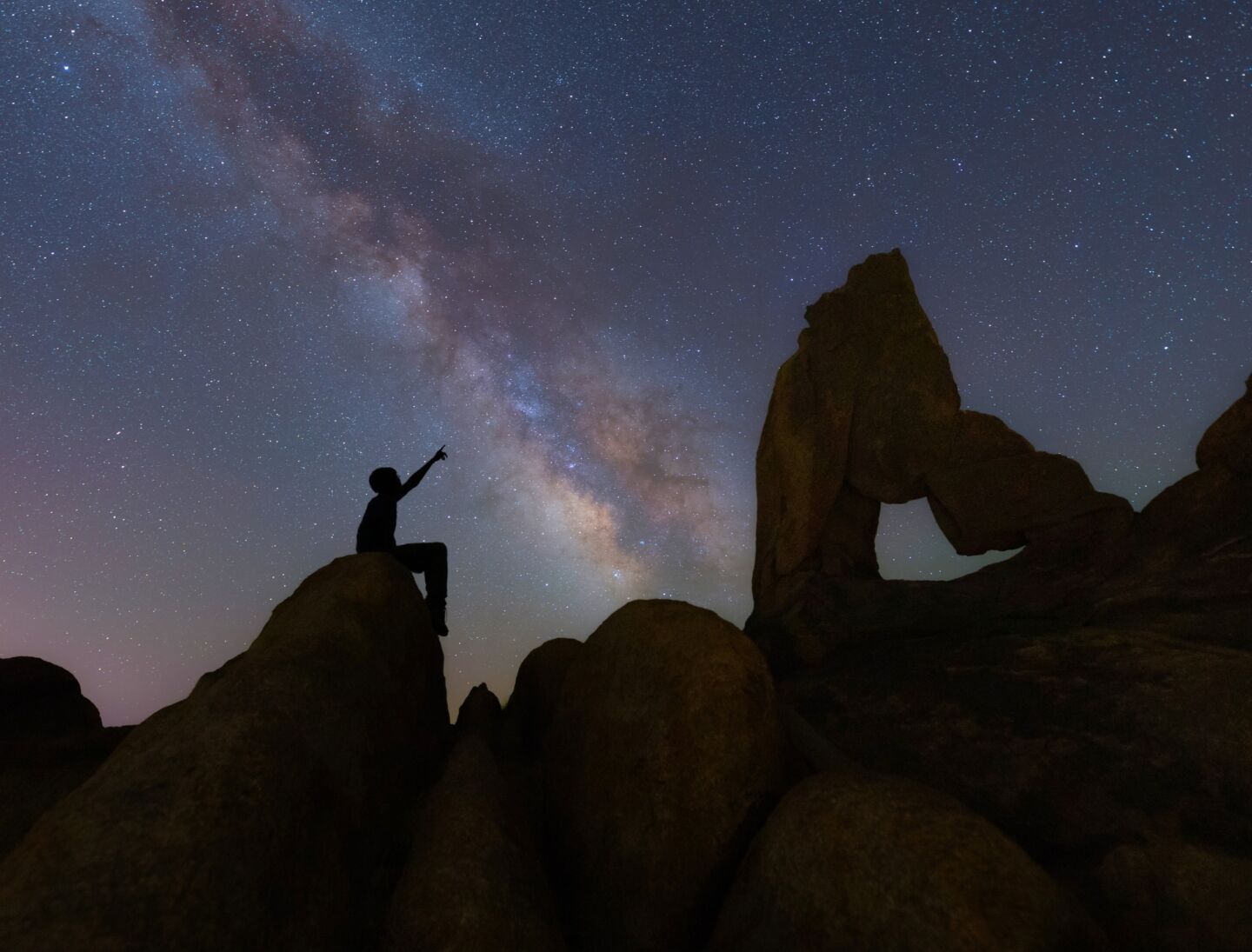
Title of photo: Within Arm’s Reach
Name of photographer: Neil Shet
Location of photo: Alabama Hills, California
Description: What if the Milky Way is within arm’s reach? While venturing into the Alabama Hills desert at 3 am under pristine dark skies, I came across this interesting looking rock formation known as Boot Arch. With the Milky Way “coming out” from Boot Arch, I had my brother sit on a rock as if touching the Milky Way.
Technical information: Blended | Camera body: Canon EOS 5D Mark IV | Lens: Canon 16-35mm lens | Aperture: f/2.8 | ISO: 8000 | Shutter speed: 20 sec
Third Place
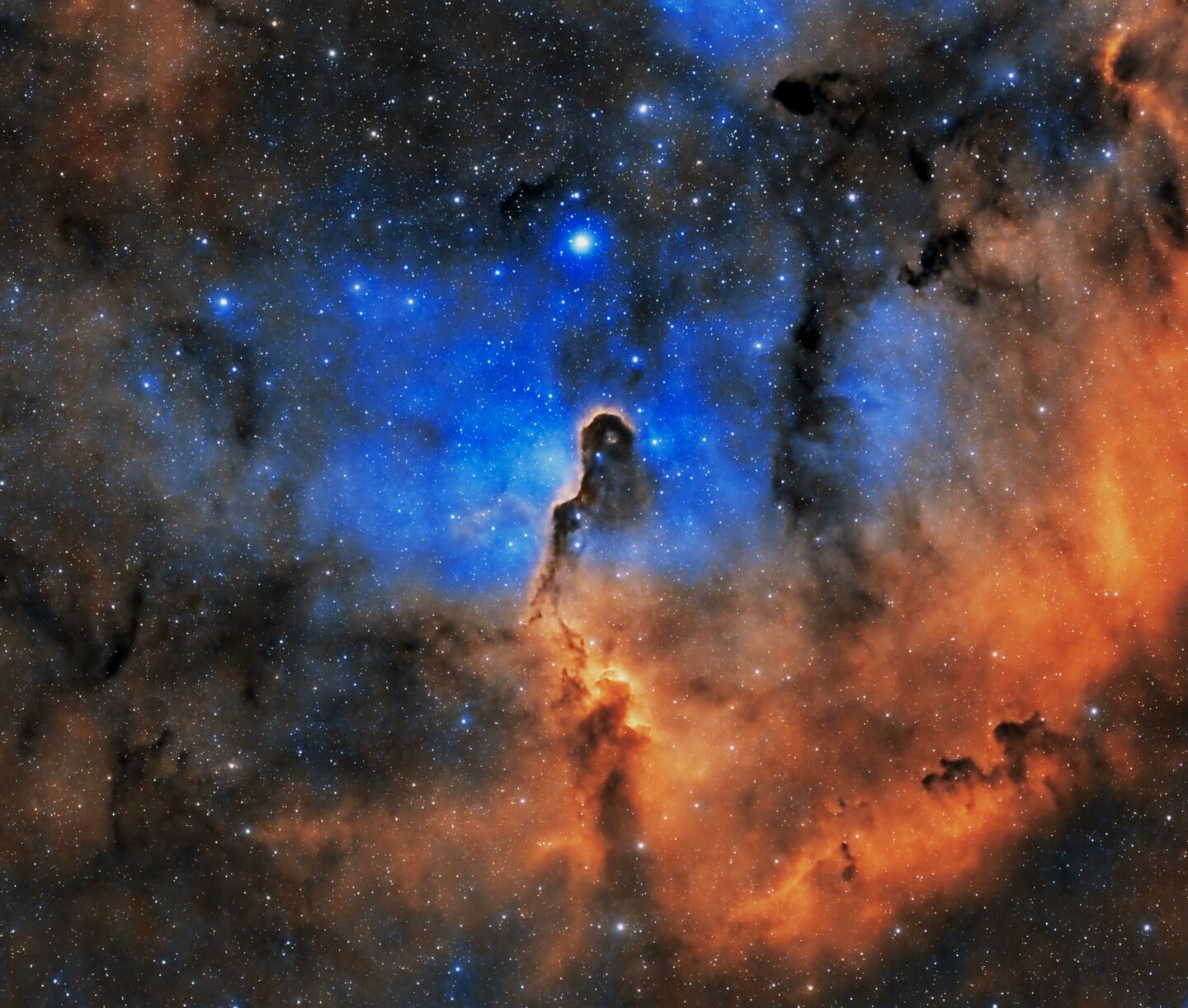
Title of photo: An Elephant You’ll Never Forget!
Name of photographer: Harry Johnson
Location of photo: My Bortle 5/6 Garden in Polesworth, Tamworth
Description: I took this photo of the Elephant’s Trunk Nebula a few months ago from my Bortle 5/6 garden in England. I’m always amazed by what I can capture from my own garden but this photo is of a particularly beautiful area of the sky. I hope you like the photo too!
Technical information: Stacked | Camera Body: ZWO ASI183MC Pro | Lens: William Optics Redcat 51 | Aperture: 51mm | ISO: Gain 111 | Shutter speed: 55x 5mins (4hrs 35mins total)
Category
Utah Dark Skies
Presenting Sponsor Visit Utah encourages you to share a photo taken in one of the most popular destinations to capture dark skies — Utah, U.S.
First Place
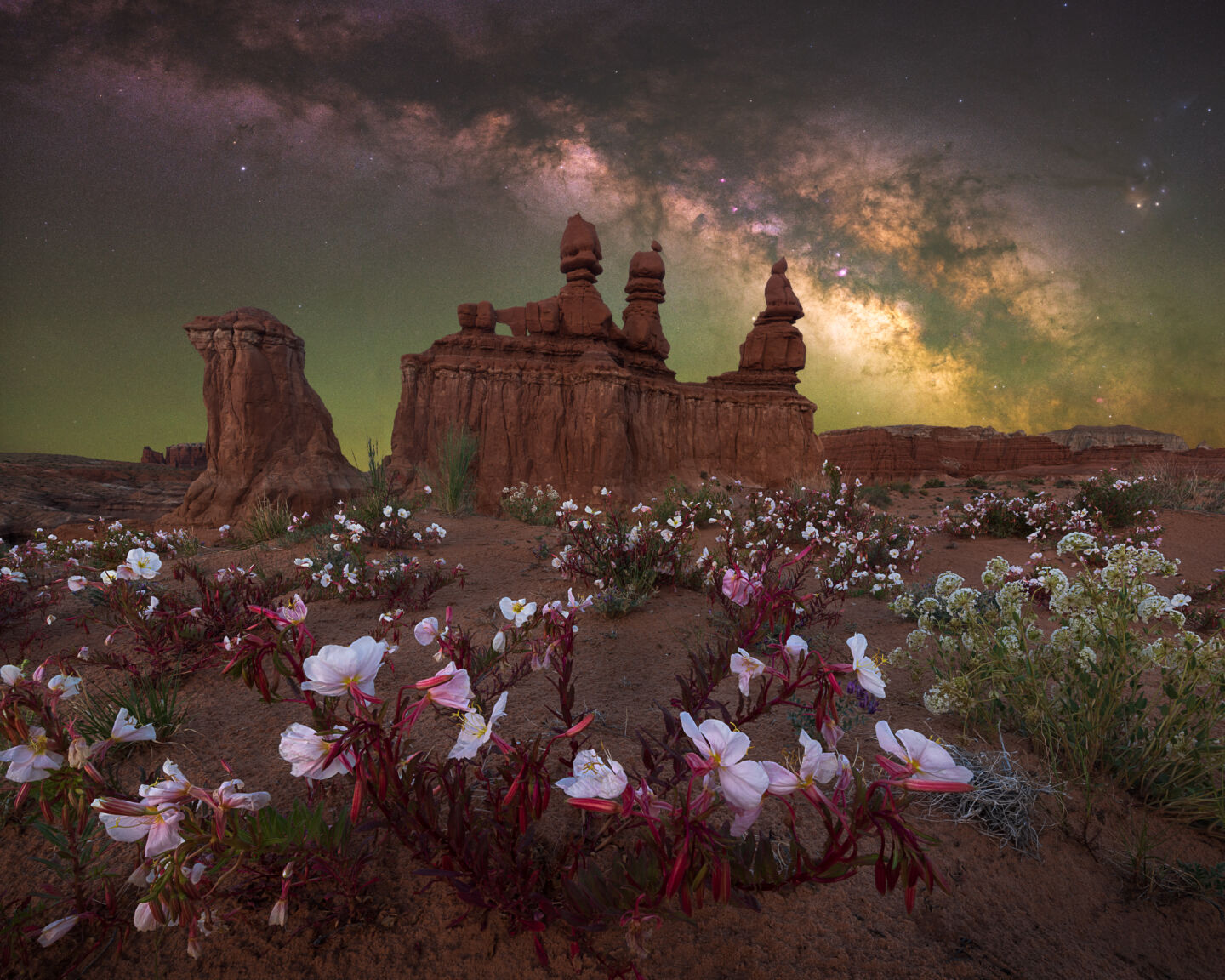
Title of photo: Desert Bloom
Name of photographer: Marcin Zajac
Location of photo: Goblin Valley, Utah
Description: Taken in Goblin Valley State Park, an International Dark Sky Park.
Technical information: Blend | Camera Body: Nikon D810 | Camera Lens: Tamron 15-30 | Aperture: f2.8 | ISO: 800 | Shutter Speed: 2 minutes
Category
People’s Choice
Chosen by our community of dark sky supporters received the most votes in a public poll.
First Place
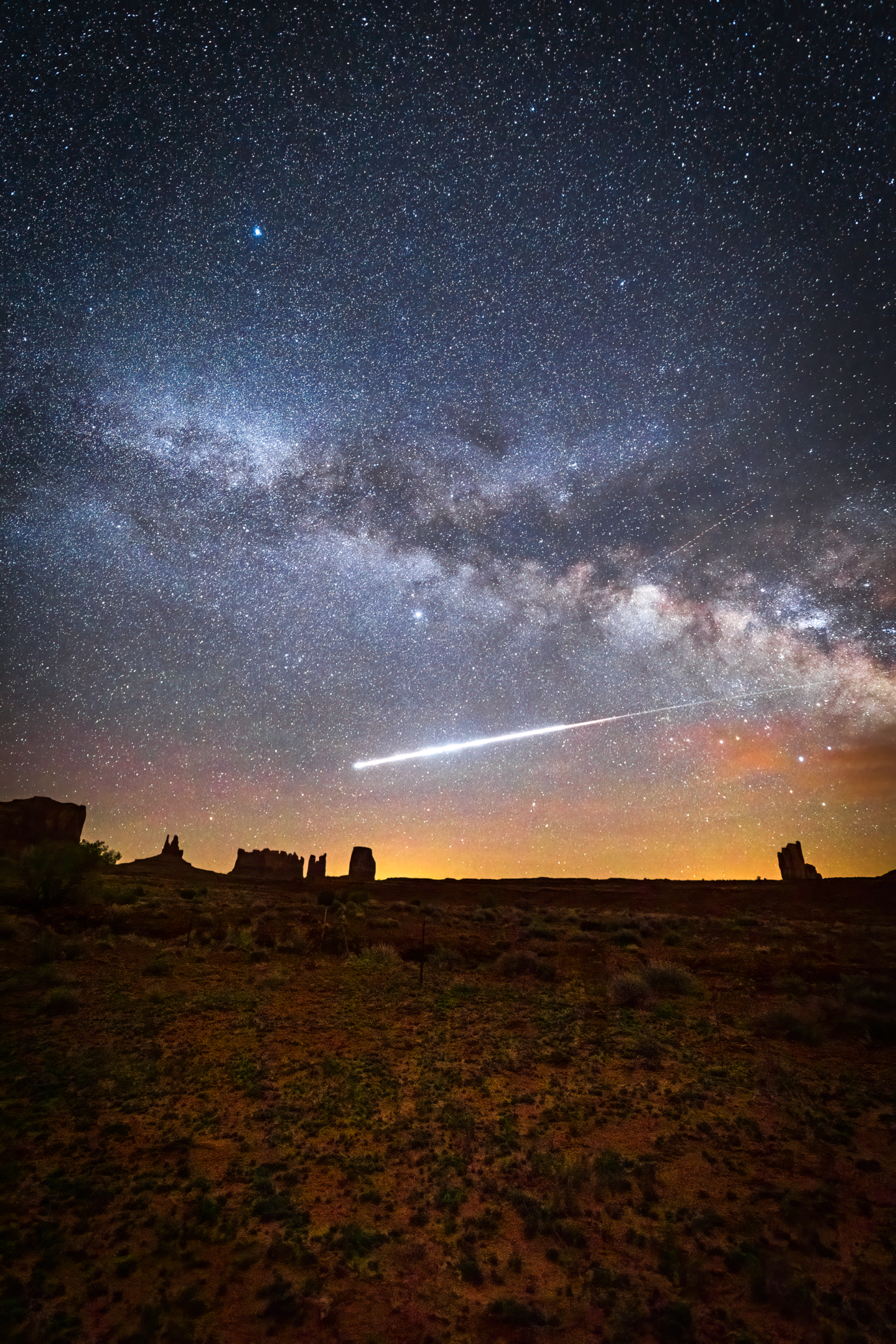
Title of photo: Inesperado Meteoro
Name of photographer: Juan López Hoyos
Location of photo: Monument Valley, Utah
Description: Me es fascinante fotografiar la vía láctea. Hacia una panorámica de su arco y repentinamente surca el espacio un gran y brillante meteoro. Asombrado por verle, giré la cámara hacia donde se encontraba y pude fotografiarlo con la espectacular vía láctea de fondo. Sin duda, un momento maravilloso e inolvidable que se dio al estar conectado con el universo.
Technical information: Single exposure | Canon EOS 5D Mark IV | Aperture: f/1.8 | ISO: 3200 | Shutter Speed: 15 seconds
Second Place

Title of photo: Feeding My Soul
Name of photographer: Dora Redman
Location of photo: Talkeetna, Alaska
Description: The northern lights are for sure the best lighting ever! Life feels perfect when I am photographing the Auroras! Being out and shooting the Northern Lights brings me back to a special place, I feel complete, and it feeds my soul. This is a self-portrait shot on August 28-29, 2020.
Technical information: Blend | Camera Body: Fuji GFX 50S | Camera Lens: Fuji GF45mm f/2.8 | Aperture: 2.8 | ISO: 8 | Shutter Speed: 10sec
Third Place
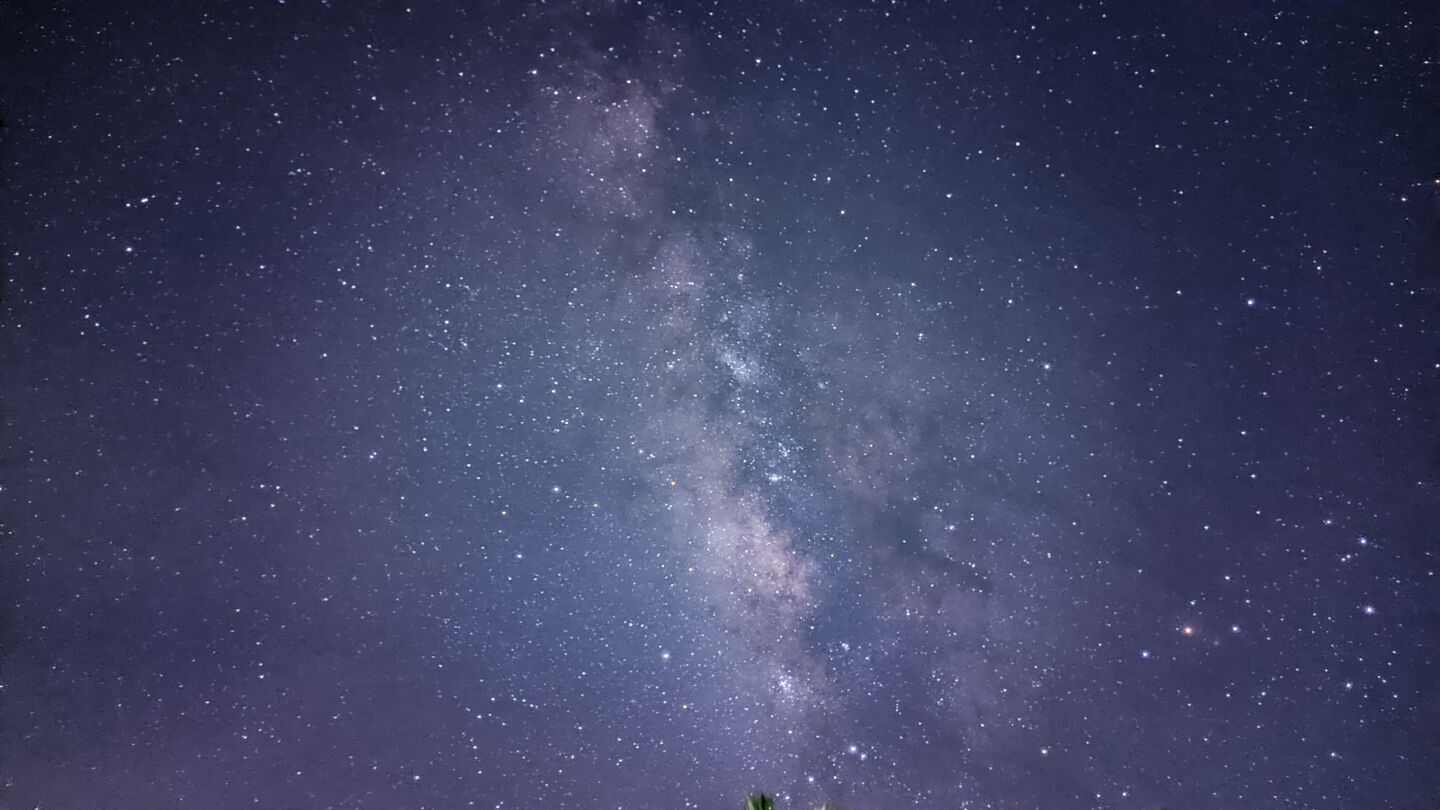
Title of photo: Best of Milky Way 2022
Name of Photographer: Ahmad Habibi Syah
Location of photo: Padang Tualang, Langkat, Sumatera Utara
Description: This picture is the result of my efforts in Astrophotography, that’s because it’s not easy to find moments where the Milky Way is in a goodposition and the weather is very bright at night. I have edited this photo a bit using Adobe Lightroom Mobile to enhance and clarify the stars and also the milky way in it. Even though the results of using Gcam are extraordinary.
Technical information: Single exposure | Aperture: f/1.8 | ISO: 200 | Shutter Speed: 240 Second/4 Minute
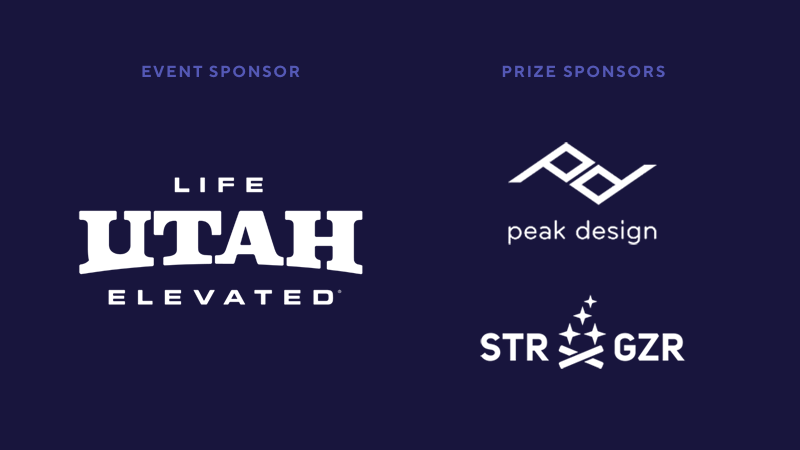
We’d like to extend a special thank you to presenting sponsor Visit Utah and prize partner Peak Design for helping support this year’s contest.
You can view all of the entries here. To see the winners from 2022, click here.
Feeling inspired? Check out these astrophotography tips and tricks and take a photo of your own.


















